Sometimes it seems that those Olympic gods really existed who, according to Greek mythology, played with the lives of humans according to their whims. In that sense, Joe Kieyoomia probably didn't know who the Moiras were, but he suffered like nobody else their gossip with the threads of life, because his was dramatic as the most tremendous movie that could be made:prisoner of the Japanese in World War II and locked in a dungeon whose thick walls, ironically, saved his life in August 1945; the cell was, yes, in the city of Nagasaki, where the second atomic bomb was dropped.
Joe was born in 1919 in the US state of New Mexico. He was not Anglo-Saxon but Navajo, the indigenous people with the most inhabitants in the country, also distributed in Arizona, Utah and Colorado, forming the so-called Naabeehó Bináhásdzo or Navajo Nation. It is a large reserve of seventy-one thousand square kilometers that was created in 1868, expanding several times since then, with institutions and its own government -although subject to the federal government-, in which more than three hundred thousand people live.
The Navajos speak a language belonging to the Atapascan group, a set of languages that extends over two large areas that are very separate from each other:one, the zone outlined, which also includes the six Apache languages and the Kiowa; the other, the northwestern third of Canada (where the Navajos came from, since they did not arrive in the US until the 13th century), with some more specific points on the coast of California and Oregon.
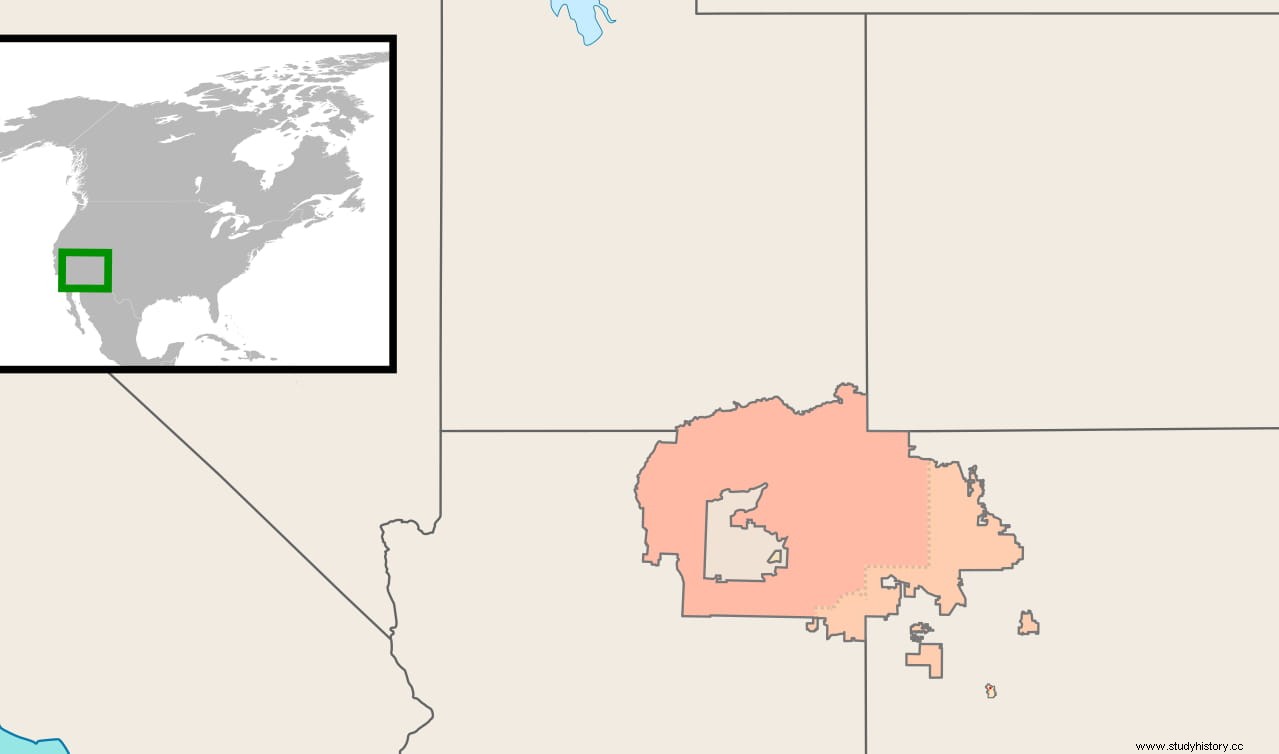
The Navajo specifically, called diné bizaad , was chosen during World War II to encode messages due to its complex grammar and phonetic difficulty, which were only within the reach of someone accustomed to practicing it since childhood. Something that seemed enormously interesting to encrypt military messages at the front and that is why it was proposed by a civil engineer working as an encryptor, Philip Johnson. In fact, it was so effective that it could never be cracked by the enemy.
In reality, the Navajos are the ones who have achieved fame thanks to a movie (Windtalkers , 2002), but the use of their language was decided thanks to the good results obtained in the First World War with the Cherokee and Choctaw languages, which is why in the following one those of other peoples were also added, such as the Comanches, Hopi, Meskwaki, Assiniboine Lakota, Mohauk, Tlingit, Crow, Cree, and Seminole (the latter two spoke the same language, Muskogee); likewise, Canadians turned to the Cree.
Now, if we are only interested in the Navajo here, it is because of the figure of Sergeant Joe Lee Kieyoomia. More specifically, since he was recruited for the 200th Coastal Artillery and assigned to the Philippines, an archipelago that fell into Japanese hands in early June 1942, after the islands of Luzon and Corregidor were taken, also causing the surrender of Visayas and Mindanao.
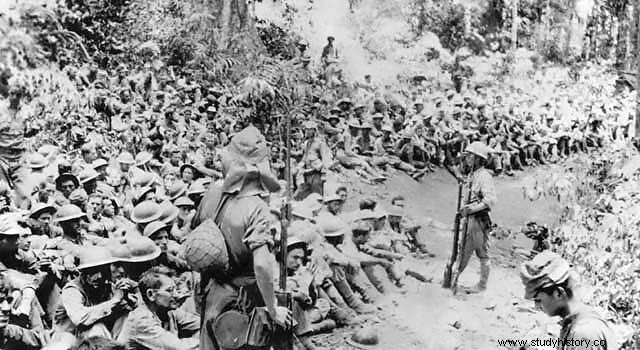
Suddenly, the Japanese found themselves not knowing what to do with the more than 75,000 prisoners they had captured, which was three times the number they expected, and the consequent logistics to attend to them had not been foreseen. At first they were gathered on the Bataan Peninsula, which closes off Manila Bay, but a solution had to be found. Finally, it was decided to send them to a concentration camp located a hundred kilometers away, in the province of Tarlac:Campo O'Donnell.
That journey was made in terrible conditions, with the prisoners exhausted and hungry, because the first three days they did not receive food and could only drink from puddles, and then they were only given a cup of rice with weevils. But, in addition, they were mistreated by the soldiers, who did not hesitate to hit or even pierce with their bayonets those who could not follow, despising them for having surrendered instead of fighting to the end. Gone were fifty Filipino officers, summarily executed.
A first stop in San Fernando served to recover meager strength, although many were dying because they could not recover or died of the epidemics that spread. The next stretch to Capas was done by train, but that did not mean an improvement, since the wagons were saturated and upon arrival they still had to walk nine more kilometers to the field. Total fatalities numbered nearly ten thousand, hence the episode was dubbed the Bataan Death March.
Many of those unfortunates still had to endure an epilogue of horror in what became known as the Ships of Hell. They were the transport ships (freighters, ocean liners...) that the Imperial Japanese Navy used to transport prisoners of war and romushas (Asian forced laborers) in Southeast Asia. The captives were crammed into the cellars, with hardly any ventilation, food, water or almost air. Fifteen of these ships became infamous, such as the Arisan Maru or the Oryoku Maru among others, because they sank with their human cargo after being torpedoed or hit by aircraft.
Joe Kieyoomia was one of the survivors of that double hell, the march and the sea crossing, since he was finally sent to the Matishima camp, located about nine kilometers south of Nagasaki, on the southwestern tip of Kyūshū Island. He thus arrived in the Japanese archipelago, where he was locked up in a prison. He surely believed that the worst was over and he could breathe. He was wrong; for him, a third part and a tremendous epilogue were still missing.
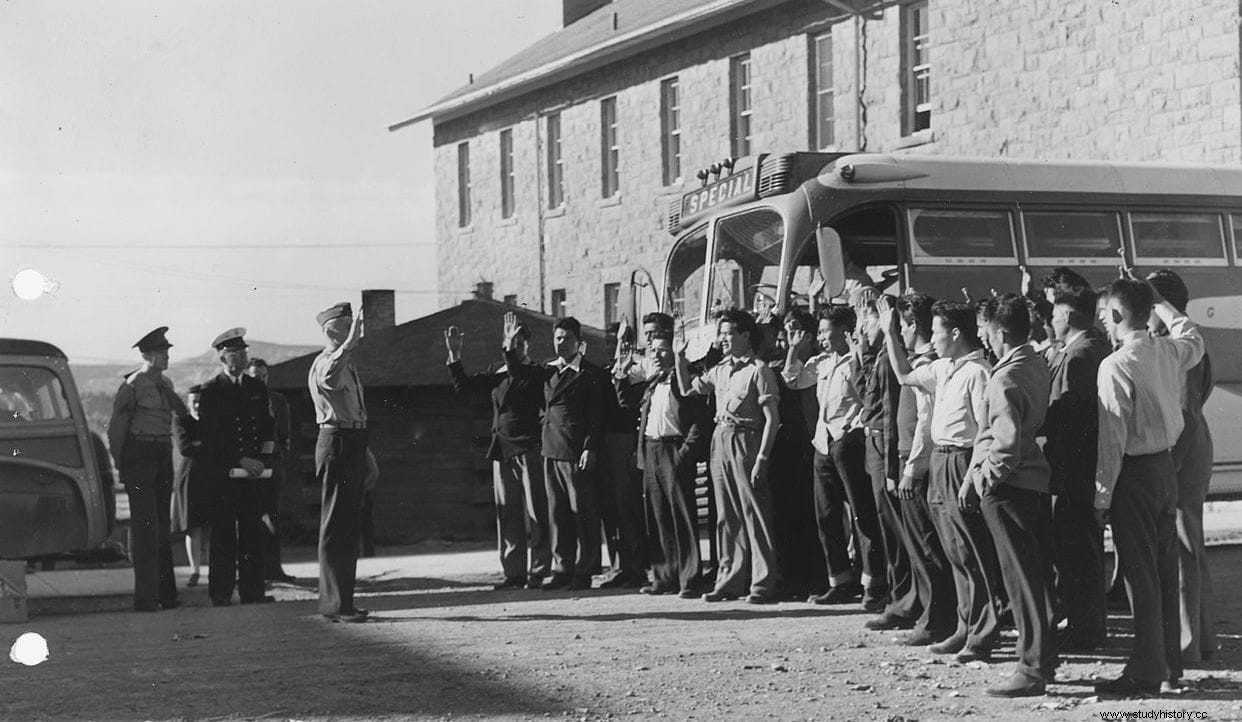
His physical appearance was not Filipino or white, of course, and although he explained that he was American, his captors took him for a Nikkei Amerikajin , that is, an American of Japanese origin; Seeing the few photos of him, you have to admit that he could really pass for Japanese. His name was issei (=first generation) to those born in Japan and emigrated to America, his children being the nisei (second generation) and his grandchildren the sansei (third generation), adding about one hundred and twenty thousand individuals in the USA.
The truth is that, when the war broke out, the Nikkei Amerikajin they were confined in concentration camps for being considered potentially suspicious, so that entire families went through this "violation of their basic civil liberties and constitutional rights", as the Civil Liberties Act would recognize. in 1988. And the Japanese thought that the fact that Joe was free and in the army responded to the fact that he was a renegade against his own. Thus, for several months he received particularly harsh treatment, until they were finally convinced that he was not really a Nikkei but a Navajo Indian.
Unfortunately, that meant jumping from the frying pan into the fire for him because he was then required to transcribe the encrypted codes in his language. By this time, the front line was getting dangerously close to their islands and, in fact, the Navajo played an important role in the conquest of Iwo Jima, so the Japanese had already learned that the enemy resorted to this trick to encrypt their messages. Having a prisoner from that town seemed, a priori, a lucky coincidence, so one day he received a visit from two women who wrote him two Navajo words in English to see if he knew how to read them, which he did.
But there was a problem. At the beginning of the conflict, the number of Navajos who could understand the language fluently enough to work on encrypted messages did not exceed thirty people. It was necessary to recruit two hundred and train them at Camp Pendelton (California) until they were able to decipher texts in half a minute; quite a success, since with the machines the work used to take half an hour. The bad thing was that it was not enough to speak that language -which was originally only oral, without a written version-, since there were many modern words and expressions that had no translation into a primitive language.
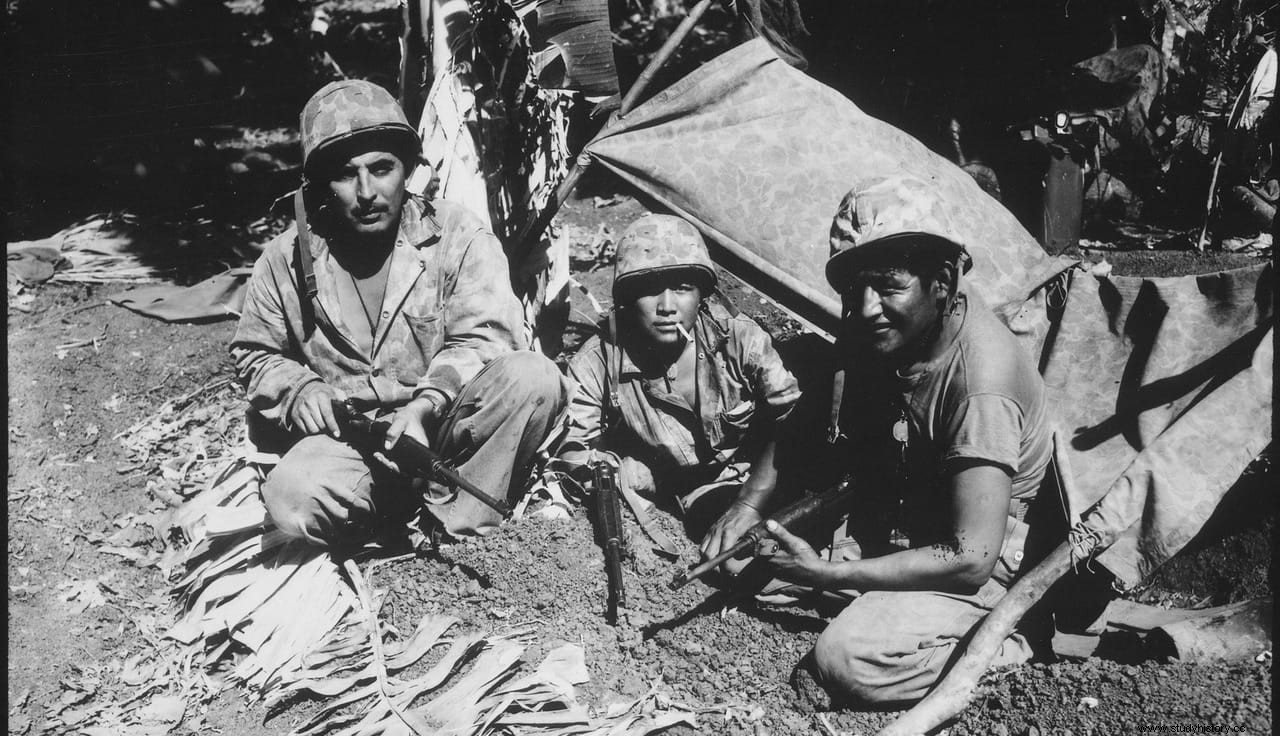
That is why metaphors were used that only expert decoders knew how to interpret. To do this, there was no choice but to develop a phonetic alphabet that would spell the words of military terminology letter by letter and even so it was too cumbersome, for which it was decided to resort directly to Navajo vocabulary in code, as we said, metaphorical, that the decoders had to be learned by heart.
For example, to refer to a destroyer, tiburón was used. or to refer to a lieutenant colonel it was said silver oak leaf . Therefore, an uninitiated would find himself with a string of nouns and verbs without apparent order or concert, being unable to make sense of the message. That's what happened to Joe. He transcribed the messages but to no avail, as he was a simple artilleryman and had not been trained to interpret them (other than being recruited before developing the code).
Unfortunately, he did not convince the Japanese, who thought that he was kidding them and, consequently, subjected him to new punishments; among them, burying him in waist-deep snow at three degrees below zero. When his punishment was lifted an hour later, the frozen soles of his feet had stuck to the ground and ripping them off left the skin behind.
Joe's captivity had already lasted three years when he arrived on August 9, 1945. Three days earlier something extraordinary and terrible had happened in Hiroshima:as confirmed a few hours later by the US president, Harry S. Truman, the city was devastated by the explosion of the first atomic bomb used in a real attack and threatened to repeat if Japan did not surrender. The Japanese press reported the sinister nuclear fungus and the devastation generated in some twelve square kilometers, but the number of victims was not clear; what was confirmed was that the Soviet foreign minister announced in Tokyo the end of the Neutrality Pact and also declared war, launching an offensive against Manchuria.
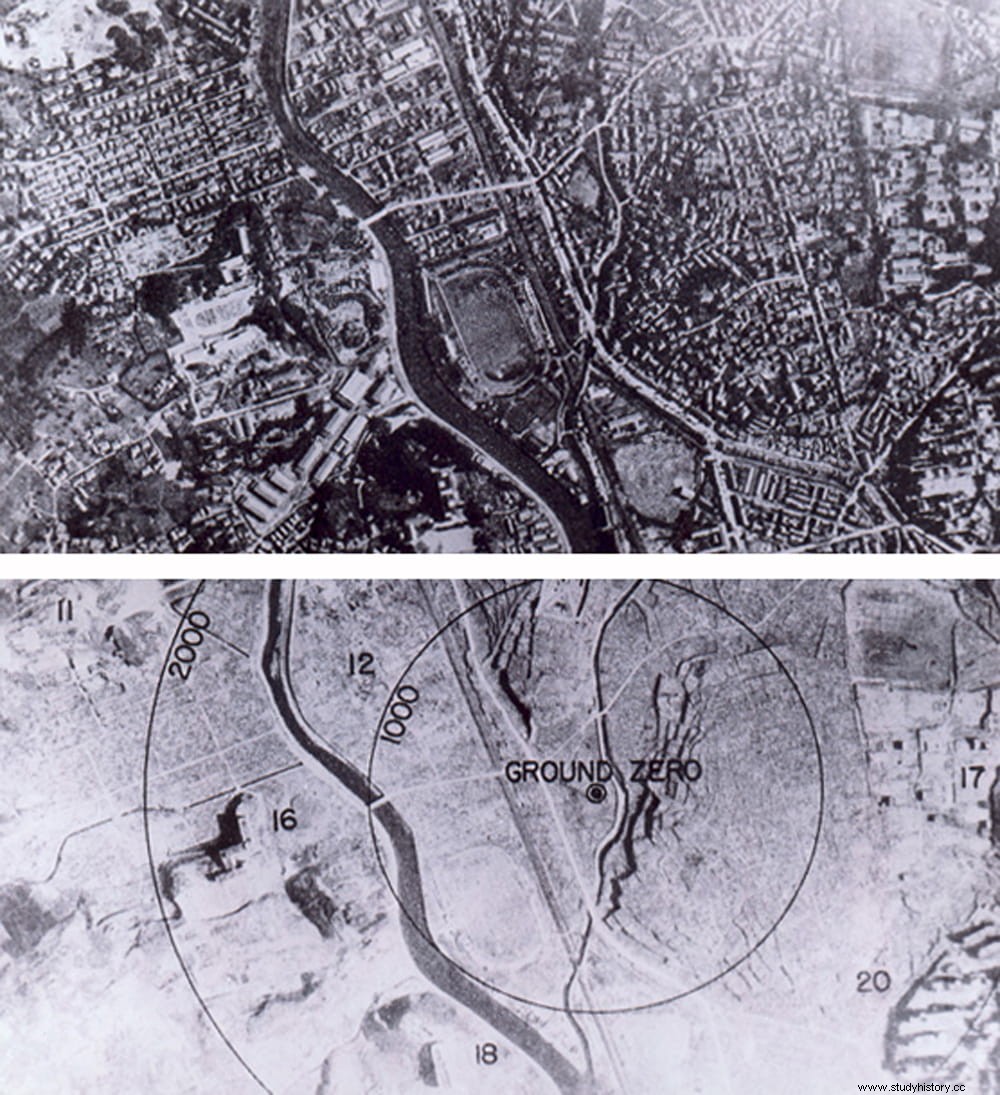
Japan was considering terms for negotiating a surrender when air-raid alarms sounded in Nagasaki. Unlike Hiroshima, it was an important port, with shipyards, and also the Mitsubishi factory, essential for the Japanese air force, was located there, so it had already suffered bombing before. Still, the second atomic bomb was not planned to be dropped there but on Kokura, but the cloudy sky above it decided the crew of the B-29 Bockscar to choose the second intended target.
The sinister cargo left the plane at eleven o'clock in the morning and exploded half a minute later, about three kilometers off the planned point. Despite this, between thirty and forty thousand people died instantly, most of them workers but including thousands of Korean forced laborers. Joe Kieyoomia could have been one of them, since his prison was there too. However, the thick concrete walls of his cell saved his life; or, at least, of that he was convinced.
The truth is that the destruction was greater in the hypocenter of the explosion because the bomb was more powerful than the one in Hiroshima. But as it burst between the slopes of the Urakami Valley, they partially cushioned the blast wave and the hills served as protection. In addition, although there were fires and many houses were made of wood, Nagasaki did not have fuel depots that generated the very serious fire storms that Hiroshima suffered; there was also no black rain, limiting the effects of radiation on survivors.
Speaking of them, Joe Kieyoomia was not the only Allied prisoner in the city nor was he the only one saved. Although the dead included seven Dutchmen and a British pilot, twenty-four Australians also escaped. In addition, that did mean the end of his misfortunes, because in the midst of the chaos and despite the fact that the rescue operation -field hospital, fire brigades- began that same afternoon (thanks to the fact that the railways were still working), Joe later explained that they forgot about him and it was not until three days later that a Japanese officer released him.
With a speech by Emperor Hirohito broadcast over the radio to the entire country, Japan surrendered on August 14. That meant the end of World War II, so Joe was repatriated to the US, where he went through various hospitals to recover from his injuries, malnutrition and dysentery. He received two decorations:the Purple Heart and the Prisoner of War Medal (created by Ronald Reagan in 1985 with retroactive effect).
In 1949 he returned to the reservation and there he rebuilt his post-war life, devoting himself professionally to making jewelry. Likewise, he married Lita Mae, with whom he had three children (Ronald, Joey, and Wanda)…and did not appear to show any side effects of his shocking experience because he lived fifty-two more years, until February 17, 1997.
